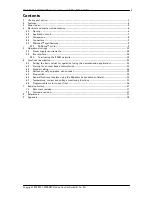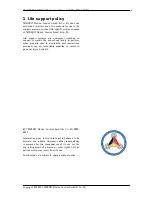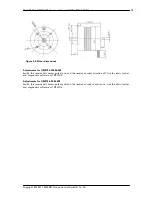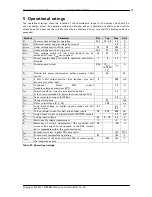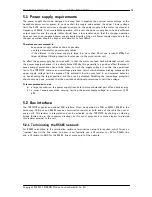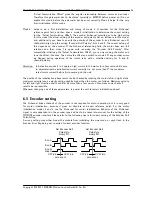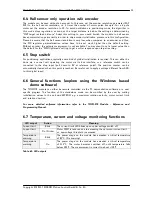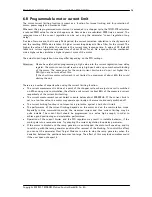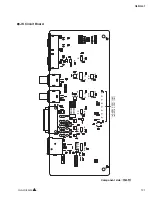
PDx-170-57-E / TMCM-170 Hardware Manual (V1.10 / 2011-NOV-24)
16
Copyright © 2011, TRINAMIC Motion Control GmbH & Co. KG
6.8
Programmable motor current limit
The motor current limiting function is meant as a function for torque limiting, and for protection of
motor, power supply and mechanical load.
Whenever the pre-programmed motor current is exceeded in a chopper cycle, the TMCM-170 calculates
a reduced PWM value for the next chopper cycle. New values are calculated 1000 times a second. The
response time of the current regulation can be set using the parameter “current regulation loop
delay”:
A value of zero means, that in every 1kHz period, the current correction calculation is directly executed
and the resulting PWM value is taken. A higher current loop delay acts like a filter for the current. The
higher the value of the delay the slower is the current loop response time. A value of 10 (default)
leads to a current regulation response time of about 10 ms for an 1/e response. On the mechanical
side a higher value simulates a higher dynamic mass of the motor.
The actual current regulation time may differ depending on the PID settings.
Attention: Please be careful, when programming a high value into the current regulation loop delay
register: The motor current could reach a very high peak value upon mechanical blocking
of the motor. The same goes for the motor current limit value: do not set higher than
12A if you are not sure about this.
If the short time motor coil current is not limited to a maximum of about 40A, this could
destroy the unit.
There are a number of aspects when using the current limiting function:
The current measurement is done at a point of the chopper cycle, where just one coil is switched
on. When using sine commutation, the effective coil current is about 88% of the measured current
respectively of the current limit setting.
The current measurement cannot detect currents below about 200-300mA. If the current limit is
set to a too low value, the motor may operate spuriously or become continuously switched off.
The current limiting function is not meant as a protection against a hard short circuit.
The performance of the current limiting depends on the motor and on the commutation mode.
Especially in sine commutation mode, the measured current and thus current limiting may be
quite instable. The current limit should be programmed to a value high enough, in order to
achieve good positioning and acceleration performance.
Operation of the current limiter and the PID regulator may result in instable behavior, if the
motor gets into a resonance area. Try adapting the current regulation loop delay parameter.
If the motor is blocked and the ramp generator is not stopped, the motor will speed up and try
to catch up with the ramp generator position after removal of the blocking. To control this effect,
you can set the parameter
Clear Target Distance
in order to stop the ramp generator, when the
deviation between the positions becomes too large. The effect of this may look somehow weird
if the user does not expect it.

